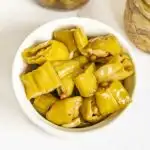Got shishito peppers to use up?? Preserve them for later with this easy Pickled Shishito Peppers recipe! The brine is easy to make, and then you simply pour it over sliced shishito peppers to pickle them.
Store these pickles in the fridge until ready to enjoy, or proceed with a hot water bath if you want to can these for long-term storage.

More shishito pepper recipes: Roasted Shishito Peppers
Jump to:
Brine for pickled shishito peppers
The brine I make for these peppers is garlicky, peppery, vinegary. Perfect for turning these peppers into a condiment that gives you a kick of flavor with every bite. The brine takes about 10 minutes to prep and boil, so it's a super simple pickling recipe.
These are refrigerator pickles, meaning there is no canning involved. Simple pour the brine in the jars with the peppers, place in the fridge, and enjoy pickled pepper goodness a few days later!
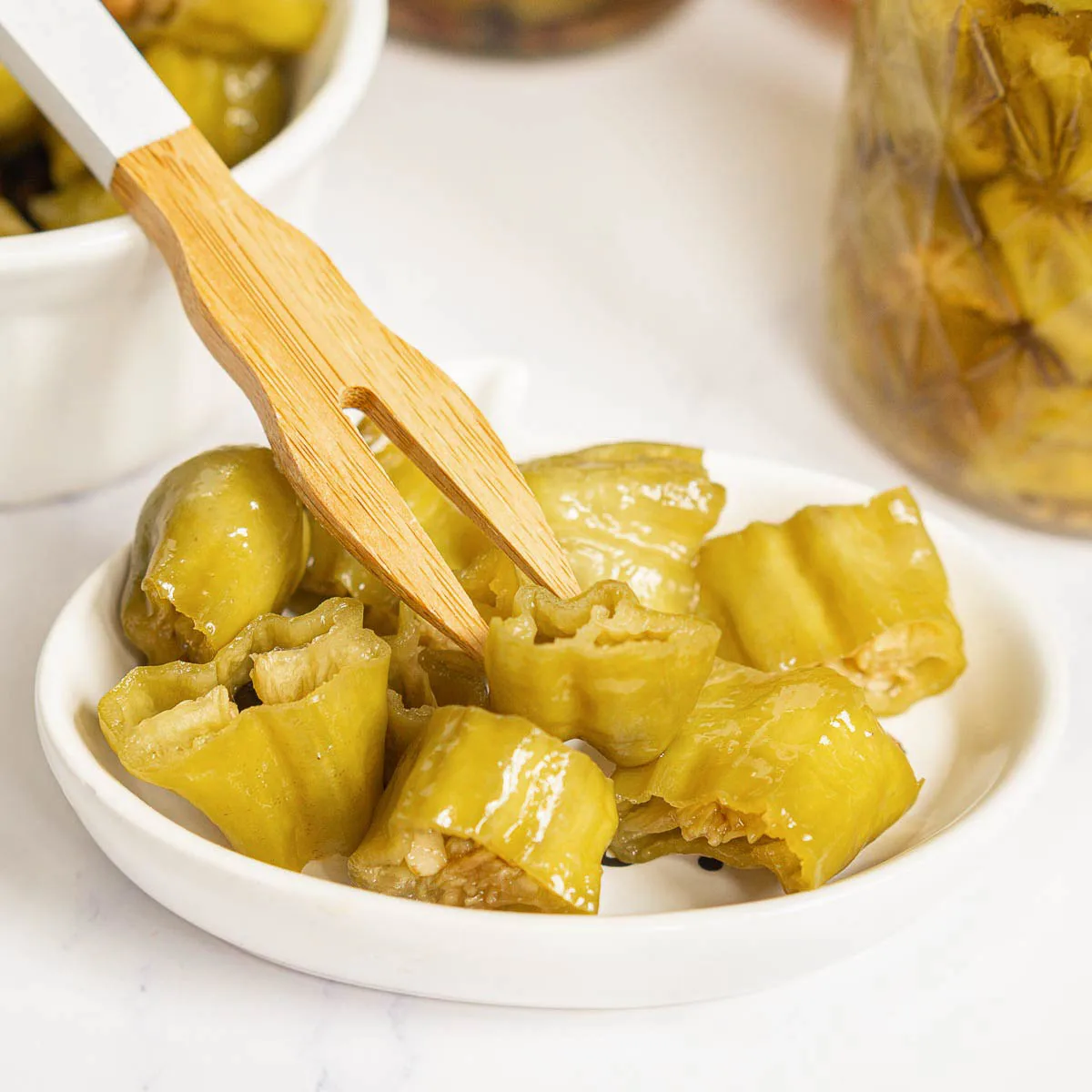
Try these other pickled recipes: Pickled Fiddlehead Ferns
How to use pickled shishito peppers
- As a garnish or side next to your favorite dinner foods
- In sandwiches
- Over salads
- Any dish where you want to add a bold and flavorful condiment!
More pickled recipes to try: Pickled Garlic Scapes
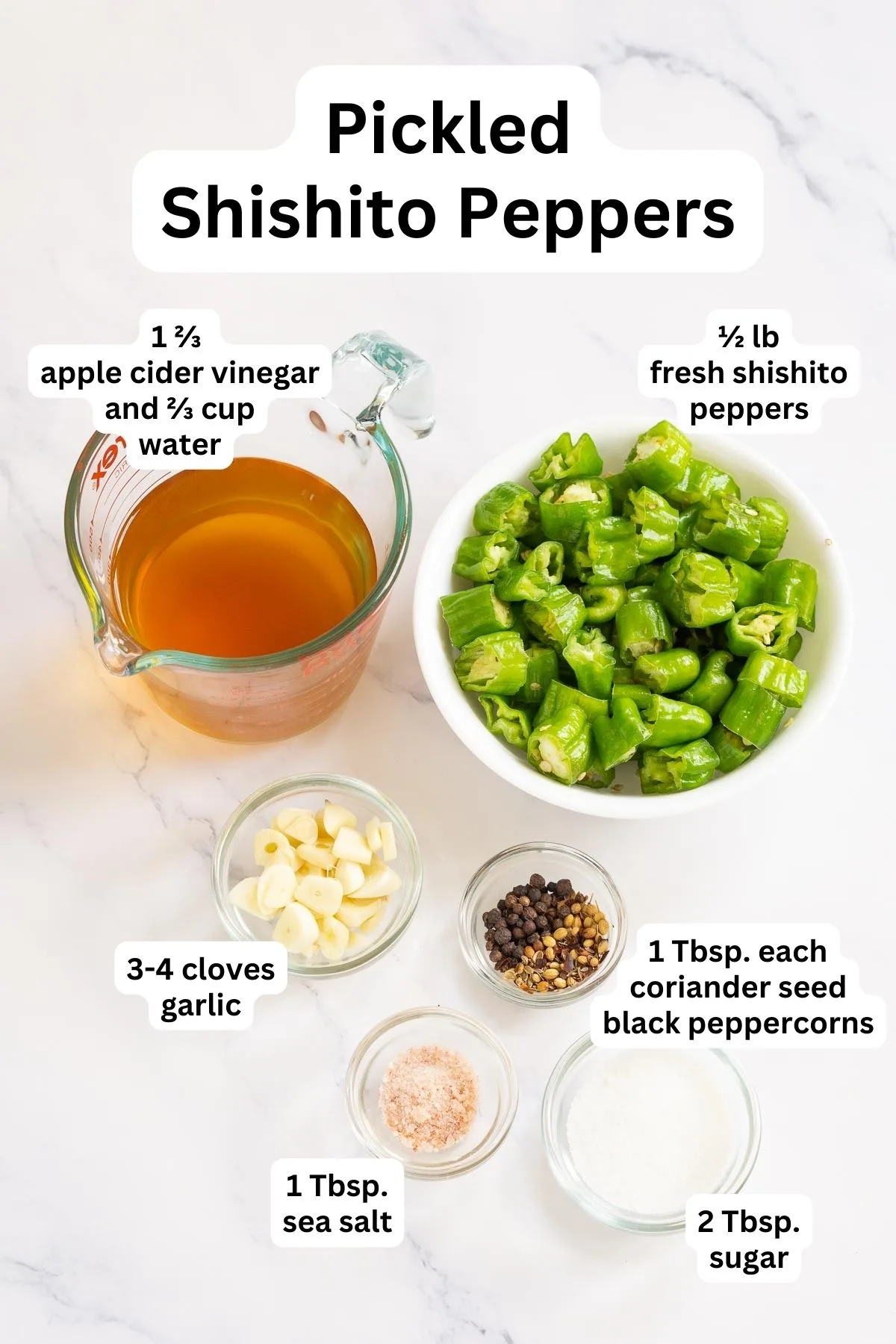
Ingredients
- ½ lb shishito peppers (about 20 peppers, depending on size)
- 1 ⅔ cups apple cider vinegar (no need to use the expensive raw ACV here, you'll be boiling it so all the probiotics from the raw ACV will be destroyed anyway)
- ⅔ cups water
- 2 tablespoons sugar
- 1 tablespoon sea salt
- 3-4 large cloves garlic, thinly sliced
- 1 tablespoon black peppercorns
- 1 tablespoon coriander seeds (optional)
- 1 teaspoon dill seeds (optional)
- ½ teaspoon red pepper flakes (optional - skip these if you don't want spicy peppers)
More summer pepper recipes: Hot Pepper Jelly
Equipment
- 3 8-oz canning jars with canning lids and bands (if canning for long-term room temperature storage, otherwise any 8-oz jars with lids)
- Medium saucepan, preferably with a spout for easy pouring
- Measuring cups and spoons
- Optional—canning supplies, if canning these instead of making fridge pickles
More summer pepper recipes: Roasted Jalapeños
Instructions
Thoroughly wash and dry the shishito peppers. Slice them into ½ - ¾ inch wide pieces. To remove the seeds, place the sliced peppers in a food storage container with a lid. Shake vigorously. Remove the sliced peppers, then discard the seeds that are stuck to the container. Repeat the shaking step a couple more times until most of the seeds have been removed. It's OK if a few seeds are remaining.
In a medium saucepan, combine the apple cider vinegar, water, salt, and sugar. Bring to a gentle boil and give it a stir to make sure all the salt and sugar dissolve.
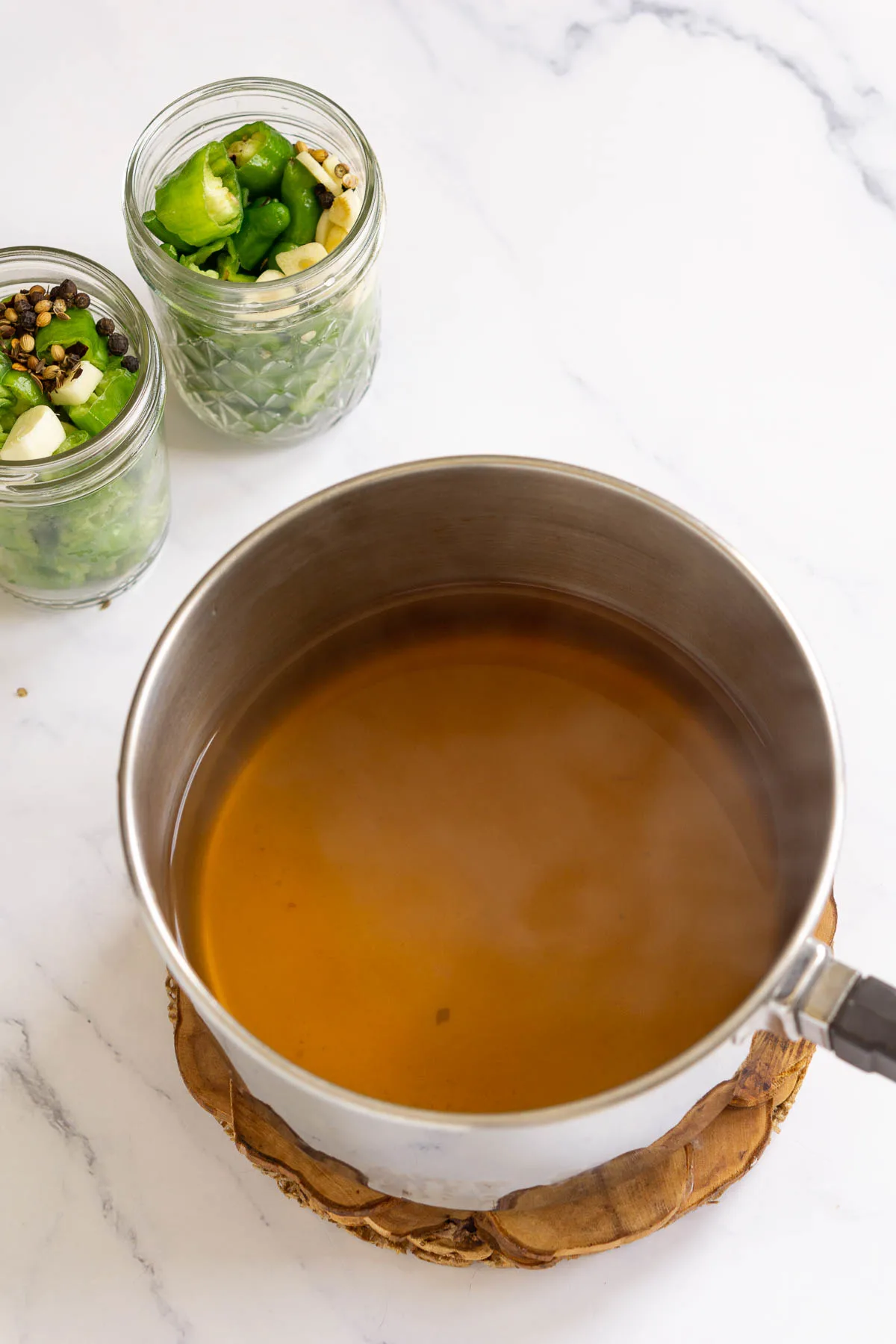
While the brine is boiling, place the sliced shishito peppers into the 3 canning jars. You should have enough to fill 3 jars. Leave about ⅓ inch space on top. Divide the sliced garlic and the rest of the ingredients (peppercorns, coriander seeds, dill seeds, red pepper flakes) evenly between the jars.
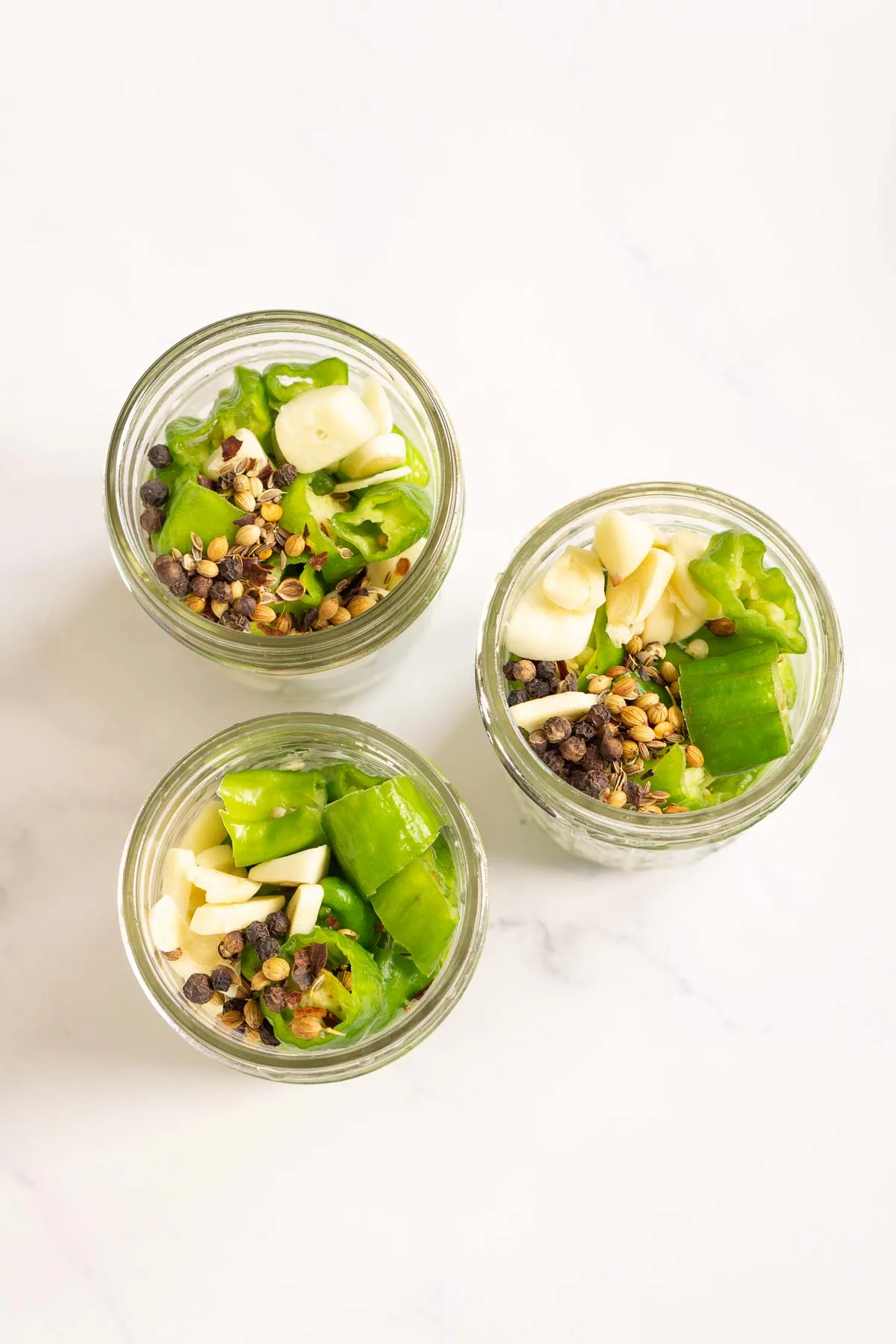
CAREFULLY pour the hot broth into the jars, covering the peppers and leaving about ⅓ inch of space on top. Use a clean fork to gently push any floating peppers down, if needed.
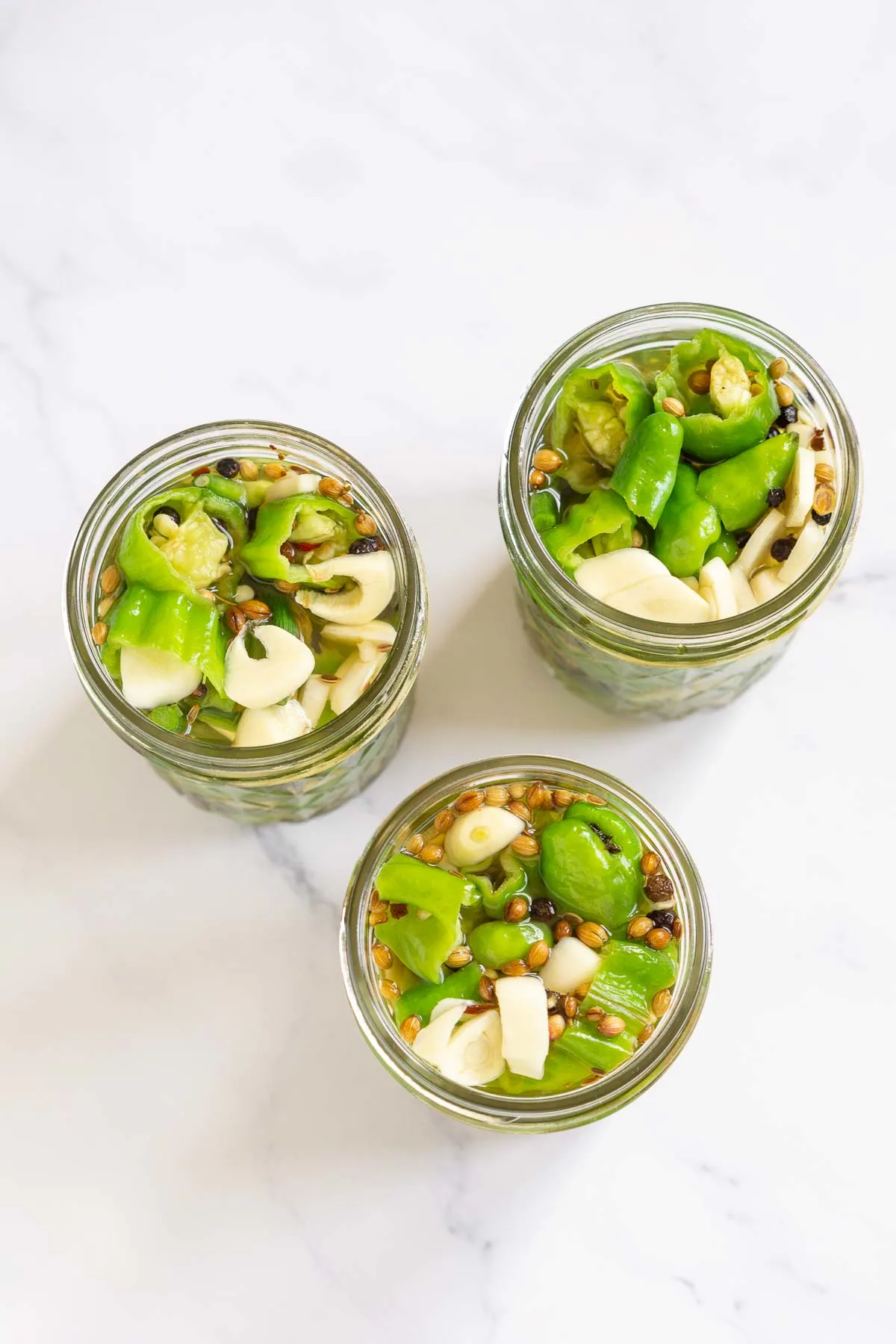
Fridge pickle instructions: Carefully cover the jars and let cool to room temperature. Once cooled, transfer to the fridge and allow to cure for at least 5 days. Enjoy within approximately 6-8 weeks.
Canning instructions: Instead of letting the peppers cool, process them in a hot water bath for 10 minutes, then store for up to 1 year. Once opened, keep refrigerated and enjoy within approximately 6-8 weeks.
If you enjoyed this recipe, let me know with a comment and a star rating below. And don't forget to share it on Facebook and save it on Pinterest for later!
Pickled Shishito Peppers
Ingredients
- ½ lb shishito peppers - (about 20 peppers, depending on size)
- 1 ⅔ cups apple cider vinegar - (no need to use the expensive raw ACV here)
- ⅔ cups water
- 2 tablespoons sugar
- 1 tablespoon sea salt
- 3-4 large cloves garlic - thinly sliced
- 1 tablespoon black peppercorns - (optional)
- 1 tablespoon coriander seeds - (optional)
- 1 teaspoon dill seeds - (optional)
- ½ teaspoon red pepper flakes - (optional - skip these if you don't want spicy peppers)
Special equipment
- 3 8-oz canning jars with double lids (if canning for long-term room temperature storage, otherwise any 8-oz jars with lids)
- Medium saucepan preferably with a spout for easy pouring
- measuring cups and spoons
- Heat-safe waterproof gloves
- Optional—canning supplies, if canning these instead of making fridge pickles
Instructions
- Thoroughly wash and dry the shishito peppers. Slice them into ½ - ¾ inch wide pieces. To remove the seeds, place the sliced peppers in a food storage container with a lid. Shake vigorously. Remove the sliced peppers, then discard the seeds that are stuck to the container. Repeat the shaking step a couple more times until most of the seeds have been removed. It's OK if a few seeds are remaining.
- In a medium saucepan, combine the apple cider vinegar, water, salt, and sugar. Bring to a gentle boil and give it a stir to make sure all the salt and sugar dissolve.
- While the brine is boiling, place the sliced shishito peppers into the 3 canning jars. You should have enough to fill 3 jars. Leave about ⅓ inch space on top. Divide the sliced garlic and the rest of the ingredients, if using (peppercorns, coriander seeds, dill seeds, red pepper flakes) evenly between the jars.
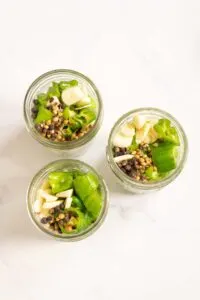
- CAREFULLY pour the hot broth into the jars, covering the peppers and leaving about ⅓ inch of space on top. Use a clean fork to gently push any floating peppers down, if needed.
- Fridge pickle instructions: Carefully cover the jars and let cool to room temperature (wear heat-safe waterproof gloves). Once cooled, transfer to the fridge and allow to cure for at least 5 days. Enjoy within approximately 6-8 weeks.
- Canning instructions: Instead of letting the peppers cool, process them in a hot water bath for 10 minutes, then store for up to 1 year. Once opened, keep refrigerated and enjoy within approximately 6-8 weeks.
Nutrition
The nutritional information displayed is an estimate and not to be used as dietary or nutritional advice. Consult a nutritionist or dietician for nutritional info based on the exact ingredients you use.


